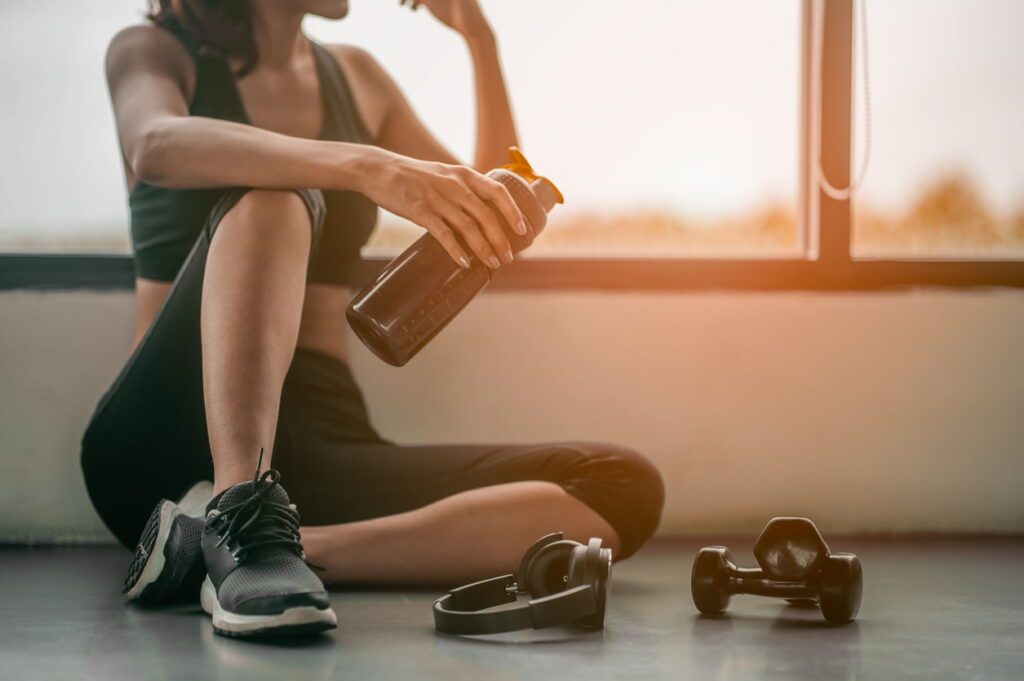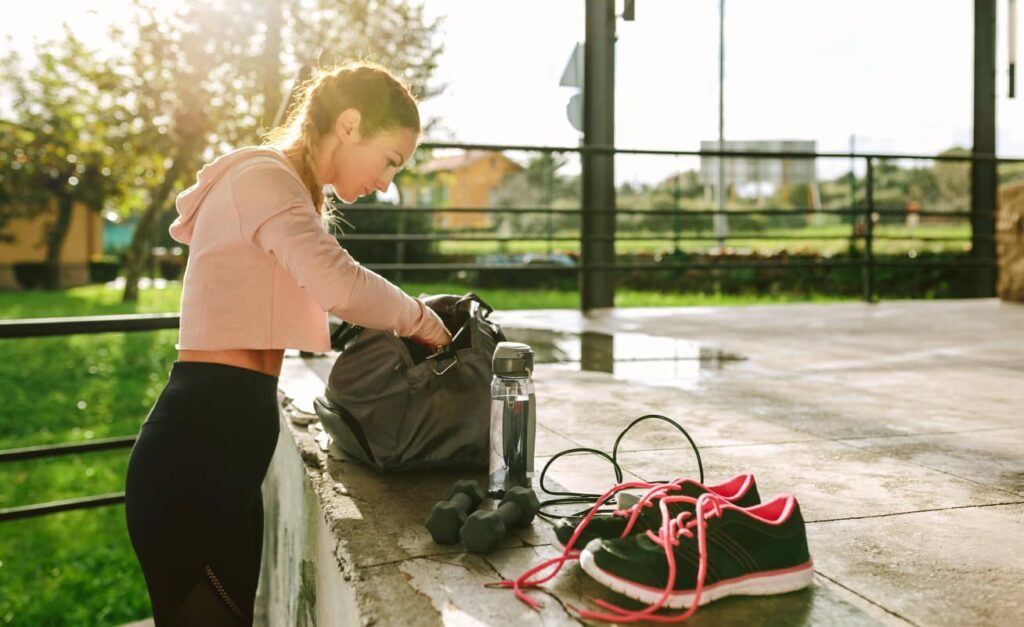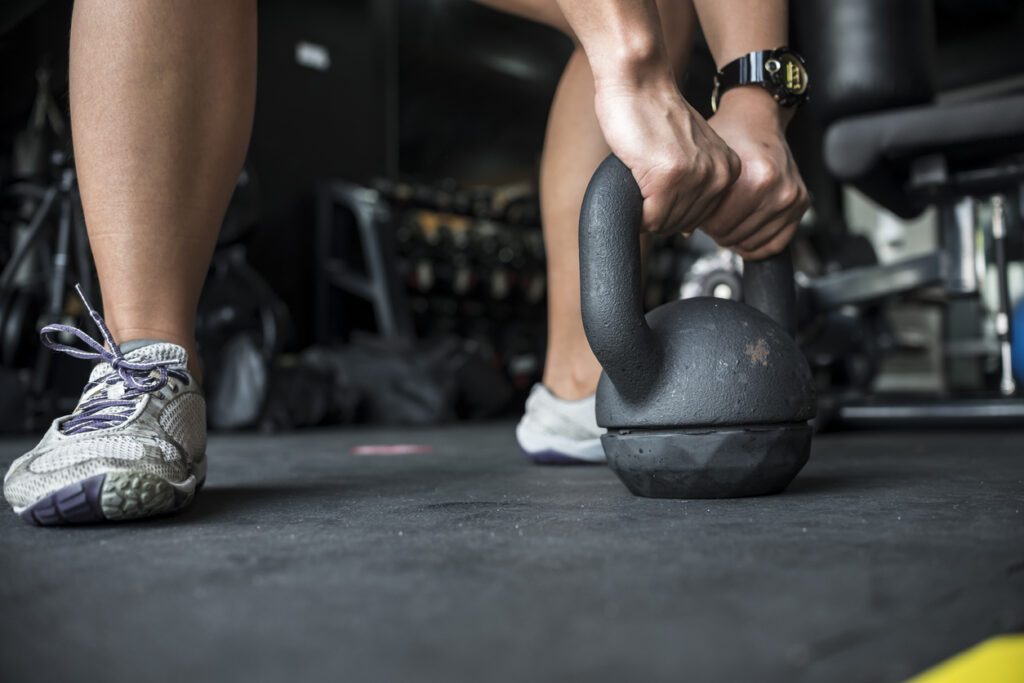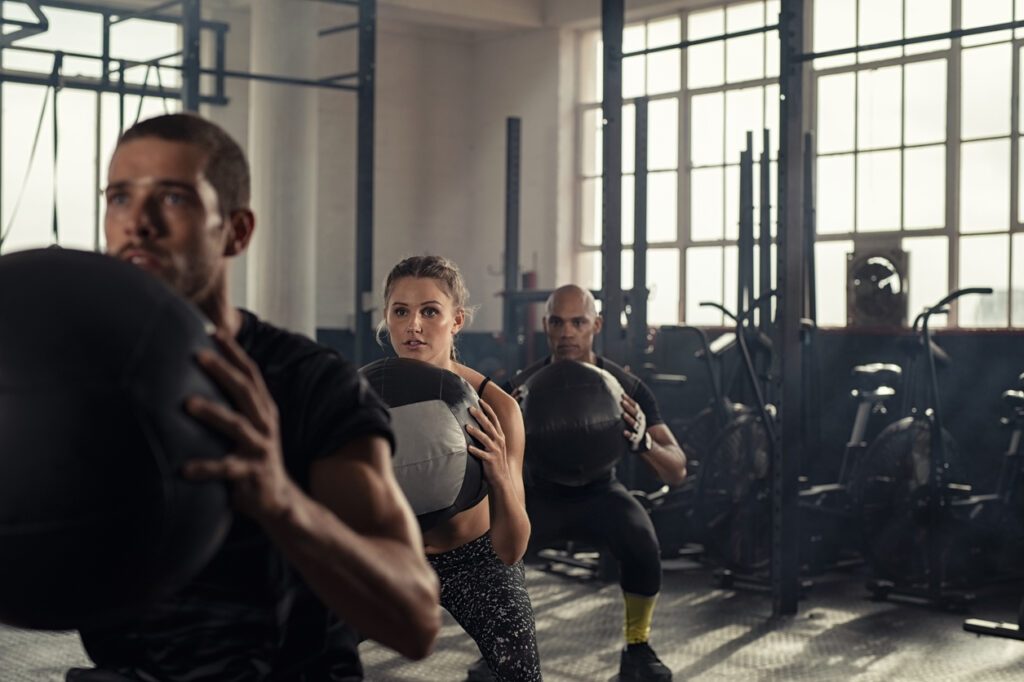
Summary
Welcome / Welcome / Tips for getting started / When to do HIIT: morning or evening?
When to do HIIT: morning or evening?
“When to do HIIT? »: a question that many fitness enthusiasts ask themselves. In the morning, energy is fresh, the mind sharp, ready to start the day. In the evening, training can be a perfect transition from the stress of the day to a relaxing evening.
But beyond personal preferences, training schedule plays a role in the effectiveness of your sessions. The choice between sunrise and nightfall can influence how your body responds to HIIT. More than just sensations, the benefits can vary.
And to go further, how many times a week should you incorporate HIIT into your routine? If curiosity piques you and you are looking for clear and precise answers, continue reading: this article is made to enlighten you! Ready to sweat? Let's go!
⚡
Summary
What is HIIT?
HIIT, from English High Intensity Interval Training, is a type of intensive training designed to maximize results in a minimum of time. HIIT boosts metabolism and offers a great way toimprove overall fitness. This is a very nice option for burn calories efficiently. In addition, this method is effective for toning and developing muscles, all in dynamic sessions.
At the heart of HIIT is a simple principle: alternate periods of intense effort with moments of recovery. Unlike traditional workouts, the total duration of a HIIT session is typically less than 30 minutes, making this approach both powerful and practical for those with busy schedules. If you are looking for a quick and effective training method, HIIT is the solution for you!

Do HIIT in the morning
If you're an early riser by nature, or looking to become one, working on your cardio with a HIIT session first thing in the morning has some interesting benefits.
Advantages
Stimulate metabolism
By starting the day with high-intensity interval training, you send a strong signal to your body. The intense effort generated by HIIT causes a phenomenon called “ afterburner“, or afterburn effect. This means your body continues to burn calories at an accelerated rate long after your session is over.
So, by integrating HIIT into your morning routine, you not only stimulate your basic metabolism, but you also increase your total energy expenditure for hours. Throughout your day, you reap the benefits of your morning workout.
Take advantage of morning hormones
There is a biological synergy between high intensity interval training and the hormones naturally present in our body when we wake up.
In the morning, our levels of cortisol, the stress hormone, and adrenaline, known for its “whiplash” effect, are naturally high. These hormones play a key role in the mobilization of fat, thus facilitating their use as a source of energy during the intense effort provided during a HIIT session.
Clearly, HIIT in the morning can help target and burn fat more effectively thanks to this hormonal conjunction. By combining the natural spikes of cortisol and adrenaline with exercise, we optimize the body's ability to draw on its fat reserves.
Feel more energetic
HIIT is optimal for starting the day with a alertness and an radiant mood. This fast and intense training has profound repercussions on our mind and our state of mind.
First, there is the direct effect of exercise on blood circulation. HIIT, with its peaks of effort, accelerates blood flow, which brings more oxygen to our organs and, above all, to our brain. We then feel an immediate feeling of alertness and mental clarity, ideal for being focused during the day.
Then, intensive physical activity stimulates endorphin production, which are also called “happiness hormones”. These neurotransmitters play an essential role in regulating mood, chasing away feelings of melancholy or fatigue.
Finally, the accomplishment of completing an intensive workout like HIIT, especially in the morning, instills a feeling of pride and completion which can boost your day!
Have free time during the day
It can be difficult to find time to workout when you have busy days. Doing HIIT in the morning can be a game-changer.
On the one hand, by opting for a HIIT workout first thing in the morning, you capitalize on several key benefits. First of all, these sessions, generally short and intense, usually last no more than 30 minutes. By placing them early in the day, you avoid distractions and unexpected events which may arise later, making it more likely that your sports routine will be regular.
On the other hand, having already completed your training in the morning, the afternoon and evening are free for other commitments, whether it be professional obligations, family time, or simply time for yourself.
Benefit from an appetite suppressant effect
Starting the day with HIIT can affect your relationship with food during the rest of the day. Indeed, HIIT practiced in the morning has surprising benefits for those looking to better control their appetite.
During a HIIT session, the intensity of the exercises causes an increase in heart rate and intense use of the muscles. This energy expenditure induces a hormonal reaction: the release of adrenaline and norepinephrine. These hormones have in particular a natural appetite suppressant effect which reduces the feeling of hunger for several hours after training.
By doing HIIT first thing in the morning, you will be able to thus avoid snacking or excessive portions during your meals.
The inconvenients
Warm up well
If you opt for a morning session, there are essential precautions to take into account.
In the morning, after a night's rest, our body is still in the awakening phase. Our muscles are generally less flexible and our joints may be less lubricated than after a day of activity. Under these conditions, jumping straight into an intensive workout like HIIT is very risky. Without a proper warm-up, you can increase the likelihood of muscle and/or joint injuries.
If you workout in the morning, make sure to devote enough time to your warm-up. It's necessary activate each muscle group, gradually increase heart rate And prepare the joints.
Lack of energy
Pre-workout nutrition is very important. HIIT requires boundless energy, and approaching such a session on an empty stomach or with poor nutrition can seriously impact your performance.
When you wake up, your body's glycogen stores are low. Glycogen is that energy source that your muscles use during intense exercise. If these reserves are insufficient, not only are you likely to feel tired more quickly, but your ability to maintain the intensity required for your HIIT will be compromised.
However, this does not mean that you should eat a heavy meal right before training. A light but nutritious snack, rich in simple carbohydrates, accompanied by a small amount of protein, may be enough, for example an energy bar or a fruit smoothie.
Risk of sleep disruption
Getting up very early for a high intensity session can have impact on your sleep cycle, especially if you are used to staying up late.
Sleep is essential for muscle recovery and mental well-being. Depriving yourself of precious hours of rest to do HIIT can, in the long term, reduce the benefits of the workout itself. Additionally, intensive training, especially if done with a sleep deficit, can increase the level of the stress hormone cortisol, which can disrupt your ability to fall asleep at night.
If you find yourself pushing back your bedtime regularly, while still getting up early for HIIT, you are creating a vicious cycle of fatigue and stress which could affect your performance, mood and general health.
Do HIIT in the evening
Advantages
While it is common to think that morning is the best time to train, know that the evening also offers its share of benefits, particularly for HIIT.
Enjoy a better body temperature
Our body temperature reaches its peak in the afternoon and early evening. A higher body temperature promotes better blood circulation, which facilitates the delivery of oxygen to the muscles. This natural optimization can increase performance during an intense workout like HIIT.
In addition, after a day of activity, our muscles are more flexible and warmer. This flexibility can reduce the risk of muscle injuries, allowing higher intensities to be achieved without fear of tears or strains.
Finally, the joints, after being used during the day, are better lubricated in the evening. Better joint lubrication facilitates movements And reduces the risk of joint trauma during high-impact exercises.
Being able to eat before the session
By scheduling your HIIT session in the evening, you can eat wisely throughout the day to prepare your body for the intense effort to come. Meal timing and quality can make all the difference in terms of performance and resistance during training.
Unlike in the morning when our energy reserves may be limited after a night of fasting, training in the evening allows you to benefit from several meals and snacks to recharge muscle glycogen stores. With full reserves, one can expect better endurance and the ability to maintain intense effort over time.
Additionally, having a full day to eat provides the opportunity to choose balanced meals. Thus, one can consume complex carbohydrates for prolonged energy release, proteins to support muscle recovery, and healthy fats for lasting energy.
Eliminate stress
After a long day filled with professional responsibilities, stress can build up and take a heavy toll on our physical and mental well-being. Doing HIIT allows you to release this pressure.
Thanks to its periods of effort then recovery, HIIT stimulates endorphin production which, once released, provide feeling of euphoria. This can strongly reduce stress and anxiety.
In addition, HIIT is a real physical outlet. With each movement, you release muscular and mental tension.
Promote muscle growth and recovery
Doing HIIT in the evening can be particularly beneficial for muscle growth and recovery. The key lies in the interaction between exercise and the secretion of anabolic hormones.
Testosterone, often associated with strength and muscle development, sees its concentration increase significantly after intense exercise. This increase is even more pronounced when training in the evening, a time when the body tends to naturally secrete more of this hormone. Thanks to its anabolic effect, testosterone promotes muscle protein synthesis, essential for the growth and repair of muscle fibers used during HIIT.
Likewise, the'growth hormone, another major player in recovery and muscle development, is also stimulated after a HIIT session. It plays a crucial role in the tissue repair, there cell growth and the fat mobilization.
The inconvenients
Sleep disturbance
HIIT causes a sharp increase in heart rate. The heart beats faster to provide the muscles with the oxygen necessary during intense exercise sequences. This increase in heart rate also causes an increase in body temperature. While this is beneficial for burning calories and increasing endurance, it may be less beneficial if the workout occurs shortly before bed. A hot body and faster heart can make it difficult to fall asleep.
Additionally, HIIT triggers a surge of adrenaline, a hormone that stimulates excitement and alertness. That adrenaline rush is beneficial for training, but it's less beneficial when you're trying to calm yourself down to fall asleep.
Difficulty sticking to your workout routine
After a long day, our energy level is often very low. Physical and mental fatigue can then become a major obstacle, making the mere idea of an intense HIIT session daunting. It's easy to break down and skip a session when fatigue sets in.
Additionally, the evening is often the time when we have other obligations, whether family responsibilities, social events or household chores. These obligations can quickly encroach on the time dedicated to training, especially if you haven't established a strict routine.
Finally, motivation can also decline in the evening. After facing the challenges of the day, it can be difficult to regain the momentum needed to indulge in an intense cardio session.
Having to adapt your diet
After a HIIT session, it is essential to provide the body with the nutrients needed for recovery. Protein for muscle repair and carbohydrates to replenish energy stores are generally recommended. However, eating a large meal too late in the evening can disrupt sleep. Digestion requires energy, which can keep you awake longer than desired.
On the other hand, with adrenaline and other hormones still active after HIIT, the feeling of hunger may be temporarily masked. This can lead to skipping the post-workout meal or eating too late when hunger finally sets in. thus increasing the risk of sleep disorders.
The ideal training frequency
Whether you train in the morning or evening, you will need recovery between two HIIT sessions. It is a very intense workout that puts a lot of strain on the cardiovascular and musculoskeletal systems. Although it can be frustrating, don't neglect rest. This will help you avoid injuries, chronic fatigue and overtraining.
It is very important that you be aware of your physical level and your ability to recover before setting your training frequency. Also take into account your sporting goals.
Recommended training frequency depending on your level
Depending on your level and your needs, you can do HIIT between one and four times a week:
- If you're just starting out, start by doing one or two sessions per week ;
- If you are intermediate, you can make some two to three times a week ;
- If you are an expert in HIIT, you will be able to do it three or four times a week.
However, we advise you to do not do two HIIT workouts in a row without a rest day between the two sessions. To avoid stagnating and getting bored with monotonous training, vary the exercises as much as possible in your circuit.
Overtraining
You are in a situation of overtraining when there is a significant imbalance between your recovery and your training. You are straining your muscles even though they have not recovered and can no longer provide the necessary effort. This situation leads to a drop in performance and, as a result, possibly demotivation.
The importance of nutrition
Nutrition plays a vital role in recovery after a HIIT workout. It is important to eat correctly before and after the session, to provide the body with the energy necessary for exercise and muscle repair processes.
Before the session, you should prioritize foods high in complex carbohydrates, such as whole grains, dried fruits or bananas. They will provide fuel to the muscles and brain during exercise. After the session, you must consume protein-rich foods, such as eggs, fish or cottage cheese. They will promote the synthesis of muscle proteins and the regeneration of damaged fibers.
It is also necessary drink enough water before, during and after exercise, to compensate for water losses linked to perspiration.
Conclusion
HIIT is an effective and fast training method that requires choose the right time of day and training frequency to get the most out of it.
Training in the morning or evening depends on your habits and possibilities. Obviously, the best way to determine which is best for you is to try practicing once during these two times of the day.
There is no perfect HIIT frequency: listen to your body, respect your sensations and adapt your frequency according to your abilities and your objectives.
Come try HIIT at DRIP
Did we motivate you? Let yourself be seduced by the experience DRIP ! Alliant circuit training and HIIT, we promise you 50 minutes of extreme intensity. With us you can come and train in the morning or in the evening!
Dive into our routine: 7 bases, 3 rounds, with one minute per base. All orchestrated by our passionate coaches and exclusive playlists which will galvanize your energy.
With DRIP, every moment counts maximum calorie burning : no time to rest between exercises!
Our objective : push you to give everything in a spirit of team cohesion. Here, everyone lets off steam in a good mood.
Whether you're just starting out or you're an experienced athlete, DRIP is your destination.
Impatient to experience an unprecedented sporting challenge? Join us in Monceau or in our brand new studio at Grands Boulevards ! You will love to hate us!🥵
Share
Tagged
Read also
follow us
on instagram
To follow all our news,
take advantage of our tutorials and participate
in our many competitions.
BREAKING NEWS!
Receive our newsletter.





